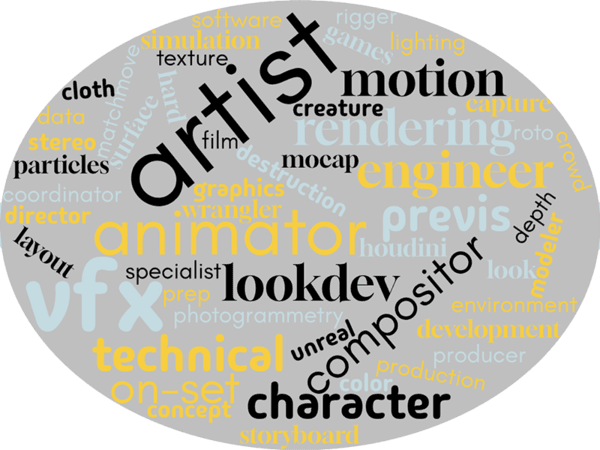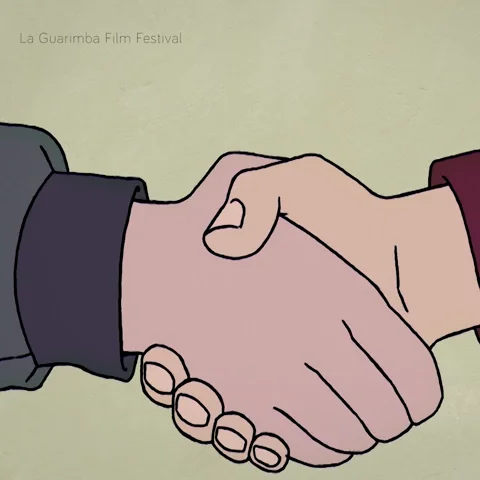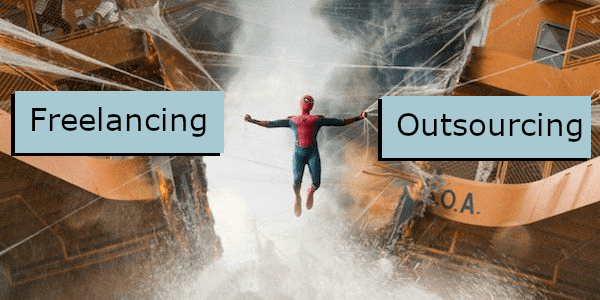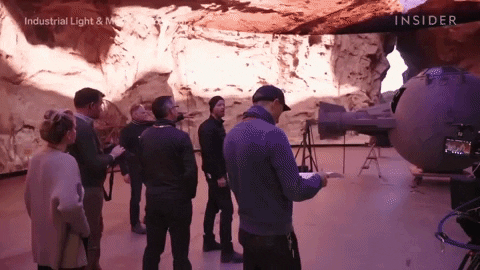A practical guide to outsourcing in CG
I’m not going to go over the usual business reasons for outsourcing—things like employee utilisation, firefighting projects that have gone off the rails, or simply avoiding the complexity of managing a large team.
Instead, let’s focus on the unique factors shaping the CG industry and why outsourcing has become a fundamental shift in how studios operate.
The Industry Is becoming more technically diverse
The industry is getting increasingly specialised. Twenty years ago, you needed a whole team to create a simple fly-through animation. Now, a freelancer with the right tools, licenses, and cloud rendering can do it solo from their living room.
The result? More competition, lower prices, and shrinking margins. While those low margins can work for a one-person operation, it’s not sustainable for creative agencies. Agencies stay profitable by offering high-value creative partnerships, not just commodity work.
That means hiring strong creatives who bring big ideas to the table. But let’s be honest: a great creative director probably isn’t also a render optimisation expert or a competent rigger.
So, back to square one, you need a creative director, a technical supervisor, a generalist, a compositor, an editor, a motion designer, a producer, a real-time artist, maybe an on-set VFX supervisor, and even a rigger, animator, or tracking artist.
People even hire AI technical directors nowadays.
That’s a lot of people to keep on payroll. And a lot of money to pay for constant training.
And the problem is getting bigger:

New deliverables require new expertise
If you had told me 20 years ago that studios would be shooting with real-time rendered LED walls live tracking a camera motion, I would’ve laughed. The same goes for digital twins, immersive experiences, or chatGPT.
Arch-viz is putting money on digital twins.
Marketers are embracing immersive, on-site apps.
Interactive, web-based content is popping up everywhere.
Immersive content, like with the Las Vegas sphere, sets up new entertainment standards.
You need a team ready to deliver and confidently expand into those new deliverables. But you also need a confirmed sale to hire the team.
Outsourcing breaks this chicken-and-egg dilemma. It lets studios expand to new services without taking on the risk of permanent hires.
The rise of niche markets (and the decline of the big 5)
With streaming platforms pumping out more content than ever, the VFX industry has been shifting away from the dominance of the Big 5 (DNEG, Framestore, MPC, Wētā, and ILM). While layoffs at big studios make headlines, the success of the many smaller studios often flies under the radar.
(Feb 21st): Between the redaction of this blog and its release, we have heard about the closure of Technicolor US, owing MPC, the mill and Mikros Animation.
We also heard Cinesite announced a £23 million loss.
But that’s one of the best things to happen to our industry. Instead of a few massive players controlling the market, we now have a diverse ecosystem of small, specialised studios.
Need a 2.5D animation style? Fortiche.
VFX for Scientific documentary? Throttle.
Real-time digital twins for architecture? Spaceform.
Rigging for TV shows and feature films? Nowake.
Believe it or not, this guy specialises in wheels. Roman Tikhonov.
If you ever run a company or handle clients, you know that you will often be asked to do something slightly outside your core comfort zone.
This is an excellent example of when outsourcing makes sense:
Take the scope, give your client all the more reasons to come back to you, but don’t let it divert your attention to what made you successful in the first place, aka your core skills.
©Roman Tikhonov

©Throttle
When NOT to outsource
The more standardised your deliverables, the less outsourcing makes sense.
Take a company that primarily produces high-end real estate stills. Following the same workflow for every project, its success hinges on efficiency, quality control, and incremental workflow improvements.
In this case, an in-house team that you train makes sense.
WeWork workflow, for example, was built on a small team structure that was duplicable, so they could scale up and maintain consistency.
IKEA produces its entire catalogue in 3D, with thousands of renders requiring absolute consistency.
Full-time employees and refining a Ford factory-like pipeline are wise for this kind of market.
It’s all about incremental improvement.
Freelancer vs. outsourcing: how to choose
If your project has a loose scope and requires flexibility, such as crafting concepts during pre-production, freelancers are the better choice.
You book them per day so that you can throw all loose briefs at them and unlimited client (and internal) feedback.
Outsourcing companies, on the other hand, are best suited for structured, well-defined tasks. Once you have a clear direction and scope, execution can be handed off.
One of the biggest reasons for outsourcing failures I’ve seen is when a client hires a vendor on a flat fee but treats them like a freelancer—expecting daily feedback loops with no clear consolidation, prioritisation, nor accountability.
Vendor: “This client doesn’t know what they want. The back-and-forth is endless. We should have quoted higher.”
Client: “Our contractor is showing a bad attitude, and meetings are tense. We’ll find someone else next time.”

The collaboration was doomed from the start.
The start? Company habits.
Give a director 2 hours daily, they’ll have twice as many comments as they would with a 1 hour daily. It’s human nature.
Be strategic about your review cycles, and avoid defaulting to daily or biweekly check-ins if they aren’t necessary.
In an ideal world, the daily should not be a live review but instead a brief, where everyone shows up ready.
A freelancer usually works directly on your system, using your software, licenses, and project structure. That is an advantage if his work needs to be picked up by your internal staff. Of course, it will come at the cost of onboarding.
While this is hardly ever a bottleneck, it can quickly add overhead if you need to hire many freelancers simultaneously. They will all need a brief, IT support, and licences.
The real bottleneck will come from output quality and consistency. The more freelancers on a project, the more likely your assets are at risk of being inconsistent.
You can solve this by assigning your 3D lead to do QC. Basically, by adding overhead.

CoCollective’s approach
Our CG supervisors, Camille , Rupert and Greg, have spent years managing outsourced assets. We’ve seen what works—and what doesn’t.
So we built the company we wished we could hire.
We understand what your CG sup needs. We know they have bigger fish to fry than QC-ing avoidable mistakes.
We also know that not everything can be reduced to a simple “done” or “not done” task—scope changes, curveballs happen. That’s why our CG sup team doesn’t just deliver; they advise on technical, cost, and timeline implications for different creative directions.

We bridge the gap between freelancers and traditional outsourcing.
- We handle asset ingest, so you don’t have to. We’ll put assets directly into your pipeline, relink dependencies, and ensure everything works before handoff.
- We do our own QC, so you don’t have to. We’ve standardised our PBR and ORM workflows to work across all render engines, catching and fixing issues (resolution, naming, texture colourspace, pivots) before they ever reach you.
- We can also work on your software and system when the project requires coordination with in-house staff.
What can be outsourced? Your problems:
- Concept art
- Modelling
- Lookdev
- Rigging
- Animation
- Compositing
- Cleanup/tracking
- Character design
- Environments
- Lighting
- Real-time asset conversion
Want to get 3D assets out of your plate?
hello@cocollective.studio
Happy Outsourcing!







